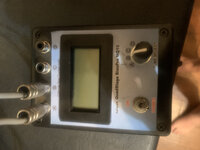SFW
Well-known member
Ok. So JJ EL34s sound like shit in my amp. Lol. I had also ordered a quartet of Tung-Sols. Installed the new tubes and let the amp warm up for about 20 minutes. Turned the amp off of standby and watched the numbers on my BiasPro start to climb. They started out at 24mA and just kept claiming. I would turn the bias pot down after they climbed past 34mA back to 30mA. And they would start to climb again. Would this be bias drift? If so, how do I correct it?

